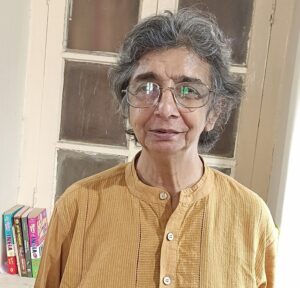
Asoka the Great was an Indian emperor, the third of the Maurya Dynasty who ruled almost all of the Indian subcontinent. Asoka (b.B.C. 304 – 232 d. B.C.) means “without sorrow”. Asoka was the grandson of Chandragupta Maurya who had founded the Mauryan dynasty. His father was Bindusara who was considered to be a good ruler of the kingdom.
Asoka ruled almost the entire Indian subcontinent (B.C. 268 to B.C. 232) The Kalinga War (261 BCE) was fought between the Maurya Empire under Asoka and the state of Kalinga, an independent feudal kingdom located on the east coast, in the present-day state of Odisha. The war with Kalinga transformed the vengeful Emperor Asoka into a stable and peaceful emperor, and he became a patron of Buddhism. Asoka gave up war and embraced Buddhism.
He then embarked on a path of peace and ruled with justice and mercy. He gave up hunting and slaughtering of animals for feasts. He started going on pilgrimage and became a vegetarian. Asoka’s edicts are a collection of more than thirty inscriptions on pillars, as well as on boulders and cave walls. Attributed to the Emperor Asoka of the Mauryan Empire (268 B.C to 232 B.C.), the edicts also tell us about his policy of Dhamma. Asoka’s inscriptions are the first tangible evidence of the emperor’s commitment to Buddhism.
He became a patron of Buddhism and spread Dhamma throughout his empire and beyond. He erected pillars and edicts all over the subcontinent. Prikrit is a commonly used language in the Asokan inscriptions. Most of the Asokan inscriptions were in the Pali language. Brahmi is the most used script used in Asokan Inscription. In some inscriptions Greek, Aramaic & Kharoshti are used. The use of Aramaic, Greek, and Kharoshti script indicates that some foreigners were living in most North-Western regions of the empire.
Asoka is remembered as a model ruler, controlling a vast and diverse Mauryan empire through peace and respect, with dharma at the centre of his preaching. Asoka promoted the spread of Buddhism across Asia at that time. Asoka ruled his empire for about forty years. He came to the throne in 273 B.C. and died in about 233 B.C. The Mauryan Empire began to decline after the death of Asoka in 232 BC.
The Mauryas
The Maurya dynasty ruled over an empire that goes by its name. King Asoka the third Maurya is best known for his renunciation of war and famous for propagating the idea of dhamma (pious social conduct) and the promotion of Buddhism as well as his effective reign of a nearly pan-Indian political entity. After Asoka’s death (268-232 BCE) the empire broke up and India became like a continent divided into many kingdoms which rose and fell and many were forgotten. Magadha, Asoka’s homeland, was one kingdom of the Ganga valley with its capital, at Pataliputra (Patna).
In the Deccan, between Rivers Narmada and Tapti, the Andhra (Telugus) ruled for several centuries and further south were 2 kingdoms of the Pallava and other Tamil peoples. Magadha was not a part of the Maurya Empire but just a Ganga valley kingdom with Pataliputra as capital. The greatest changes took place in the North- West parts of the subcontinent. As in the past when the Aryans came to India, now one people after another from central Asia came through the North-west mountain passes into India. Greeks, who had followed Alexander the Great settled in Bactria, crossed the Hindu Kush and made kingdoms in what is now West-Pakistan. One of the best Greek kings was Menander who ruled in the second century B.C. and known by Indian name Milinnda.
Menander is known in Indian History not only for his strength and courage but for his wisdom. He used to hold a council of great men to 3 discuss difficult questions and is the hero of the book Questions of Milinda. An ancient Indian writer says that there is none to equal Milinnda. The Scythians and Parthian came after the Greeks. The best known Parthian king was Gundaphar; King of India reigned in the first century AD. It is believed that St Thomas, Jesus’ Apostle, visited him and began the first teaching of Christianity in India. The Parthians were followed into India by Tartar peoples who had settled in Bactria in the time of the Chinese emperor Wu Ti.
Those who came to India were known as the Kushans. For some time the Kushan kings made an empire reaching from Afghanistan to the centre of Hindustan or northern Hindustan. Their empire was strongest in the second 4 century A.D. The best known ruler was Kanishka who like Asoka became a champion of Buddhism. Round the coast of India from the mouth of River Indus to the mouth of the River Ganga there were seaports which have vanished today. For example, the modern Kalyana stands where the ancient Calliena traded and near modern Pondicherry, the ruins of the ancient port, Podouke. The port, Masalia was probably the ancient beginning of Masulipatam.
Lakshmi Rameshwar Rao
(The writer has a Masters in Adult Education from Jamia Milia Islamia. She has many years teaching experience at the school level as also ten years of experience in book publishing and some published writing in newspapers and more students’ books. Lakshmi has retired and lives in Hyderabad.)
Dharmendra Pradhan Releases NCERT Textbooks For Foundational Classes






Congratulations Keekli!! It was a pleasure to read about you. It is so important to write good and readable content for children. Ms Lakshmi Rameshwar Rao’s page on “Ashoka the Great” has all relevant information is clear and simple language. Reading and re-reading these will not only increase children’s knowledge of history and culture, but it will improve their English!! I look forward to more of these…